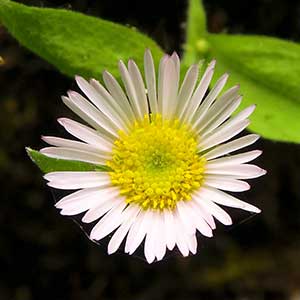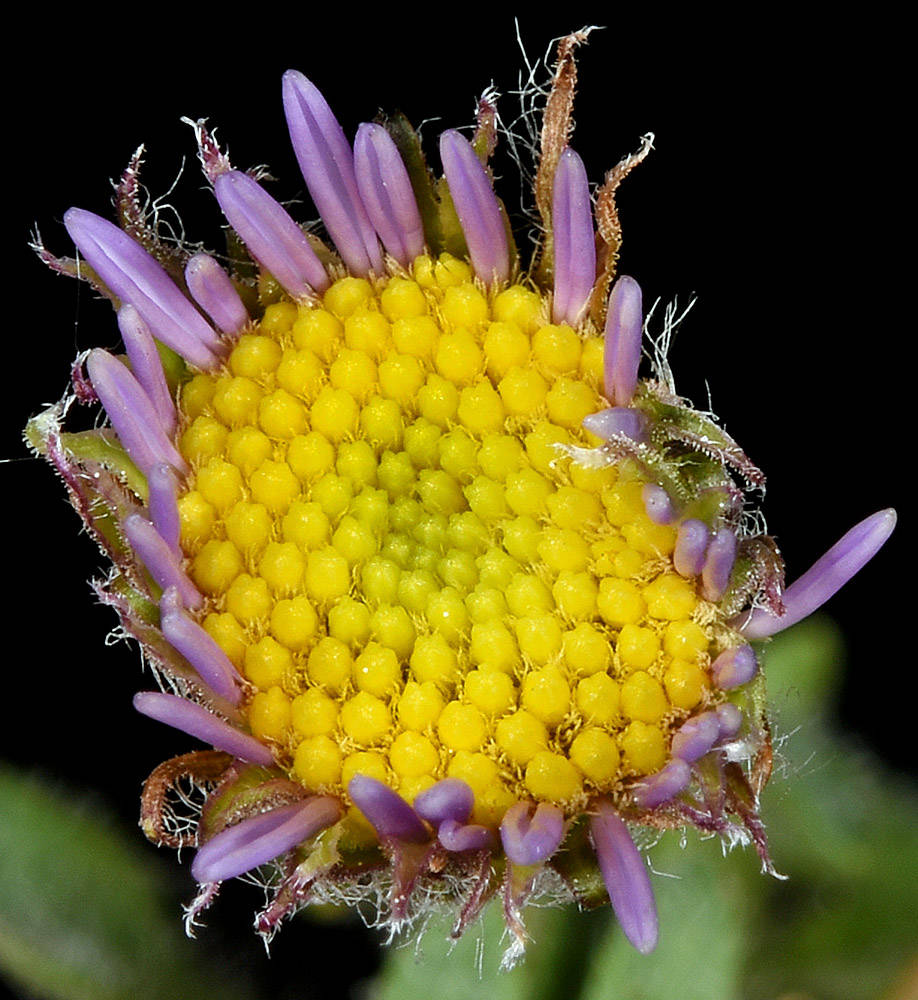Erigeron oreganus
Erigeron vagus
Gorge daisy, gorge fleabane, Oregon fleabane
rambling fleabane
decumbent to erect; hirsute with unequal hairs, sparsely glandular.
erect, nearly glabrous to remotely hirsute, minutely glandular.
persistent, obovate, 15–90 × 5–20 mm;
margins coarsely serrate to shallowly lobulate;
surfaces sparsely to moderately hirsute to strigose.
persistent, spatulate with 3–5 distal lobes, 6–25 × 3–10 mm;
margins entire;
surfaces moderately to densely hirsute.
obovate to elliptic; little or not reduced distally;
surfaces sparsely to moderately hirsute.
absent or reduced to linear bracts.
4–7 × 9–15 mm.
5–7 × 10–13 mm.
30–60, pink to purple;
rays 4–5 × 0.5–1 mm.
25–40, white to lavender to purple;
rays 6–9 × 0.5–1.5 mm.
corollas 3–5 mm.
2–3 mm.
in 2–3 series, pale green with dark green medial stripe;
surfaces remotely hirsute, strongly stipitate-glandular.
in 2 series; purplish to green, with yellow-orange medial stripe;
surfaces remotely hirsute to basally villous.
2–3 mm, moderately strigose;
inner pappi of several unbarbed to weakly barbellate twisted bristles.
2–3 mm, sparsely strigose;
inner pappi of numerous barbellate bristles.
1–4, radiate.
1, radiate.
=18.
Erigeron oreganus
Erigeron vagus
Shady cliffs, rocky slopes, crevices. Flowering May–Aug. 100–400 m. Casc. WA. Native.
This uncommon species is found only in the Columbia River Gorge.
Rocky areas, slopes. Flowering Jun–Aug. 1500–3100 m. BW. CA, NV; southeast to CO. Native.
James Riser, Stephen Meyers
James Riser, Stephen Meyers





